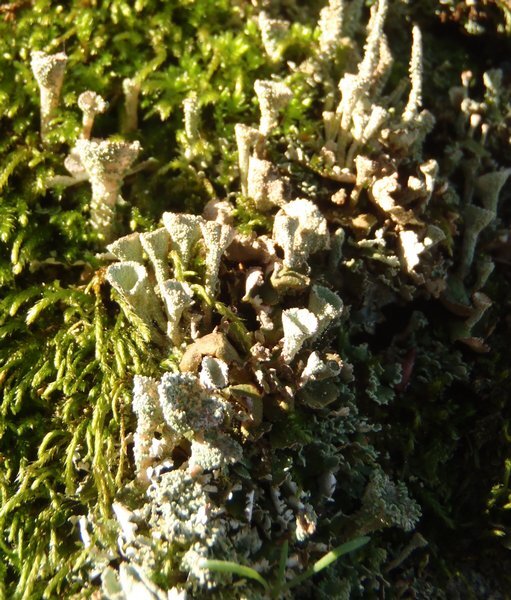Cladonia novochlorophaea (Sipman) Brodo & Ahti
Can. J. Bot. 74, 7: 1167, 1996. Basionym: Cladonia merochlorophaea var. novochlorophaea Sipman - Acta Bot. Neerl. 22: 496, 1973
Synonyms:
Distribution: N - Piem (Burgaz & al. 2020). C - Sar (Burgaz & al. 2020).
Description: Primary thallus squamulose, persistent, the squamules small, rounded, 1-4(-6) mm wide, esorediate, with entire or slightly crenulated margins, greyish green to dark brown above, yellowish beneath. Podetia goblet-shaped, hollow inside, 1-3 cm tall, dark brown, sometimes glossy, often with a necrotic medulla and stereome in basal parts, the surface roughly corticate, granulose to densely verruculose, the granules 30-100 μm across; upper part of cups frequently eroded, exposing the dark medulla in mature thalli; cortical plates and schizidia frequent at the top in older specimens, numerous squamules commonly present at the base of podetia. Apothecia mostly developing along the margins of cups, stalked, dark brown. Asci 8-spored, clavate, thickened at apex, with a K/I+ blue tholus and a K/I+ strongly blue outer gelatinous sheath, Cladonia-type. Ascospores 1-celled, hyaline, ellipsoid. Pycnidia frequent, pear-shaped, mostly at the margins of cups, with a colourless jelly. Conidia hyaline, curved. Photobiont chlorococcoid. Spot tests: K-. C+ yellow, KC-, P- or P+ red, UV- or UV+ white. Chemistry: sekikaic and homosekikaic acids, sometimes methylnorhomosekikaic and 4’-O-methylnorsekikaic acids, sometimes also with the fumarprotocetraric acid complex.
Note: on humus, decaying wood, mossy rocks and, occasionally, on bare soil, usually mixed with other morphologically similar taxa and hence often overlooked.
Growth form: Fruticose
Substrata: lignum, soil, terricolous mosses, and plant debris
Photobiont: green algae other than Trentepohlia
Reproductive strategy: mainly asexual, by soredia, or soredia-like structures (e.g. blastidia)
Commonnes-rarity: (info)
Alpine belt: extremely rare
Subalpine belt: extremely rare
Oromediterranean belt: extremely rare
Montane belt: extremely rare
Submediterranean belt: extremely rare
Padanian area: absent
Humid submediterranean belt: extremely rare
Humid mediterranean belt: absent
Dry mediterranean belt: absent
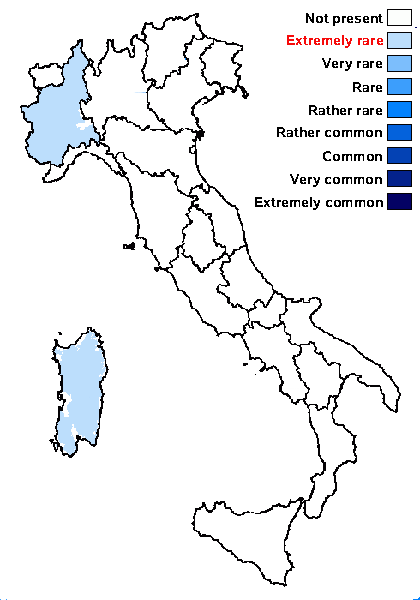
Predictive model

Bernard Bouffinier- Source: http://www.lichensmaritimes.org/index.php?task=fiche&lichen=1203&lang=en
France, Pointe de Pen-Hir
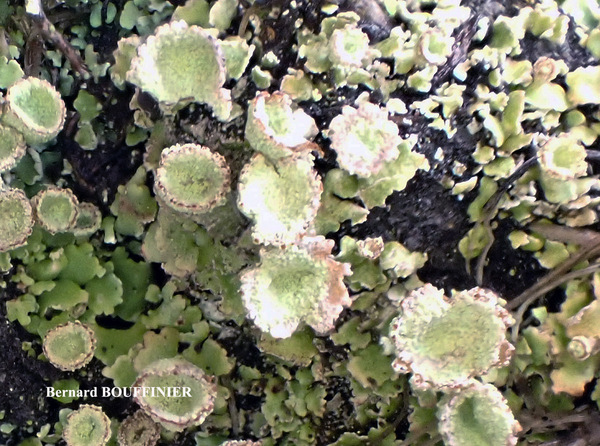
Bernard Bouffinier- Source: http://www.lichensmaritimes.org/index.php?task=fiche&lichen=1203&lang=en
France, Pointe de Pen-Hir
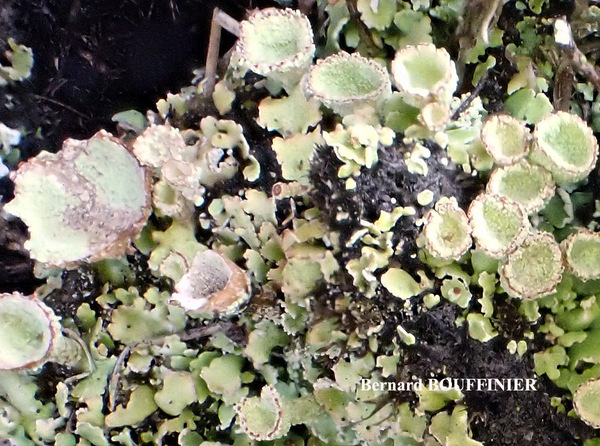
Bernard Bouffinier- Source: http://www.lichensmaritimes.org/index.php?task=fiche&lichen=1203&lang=en
France, Pointe de Pen-Hir
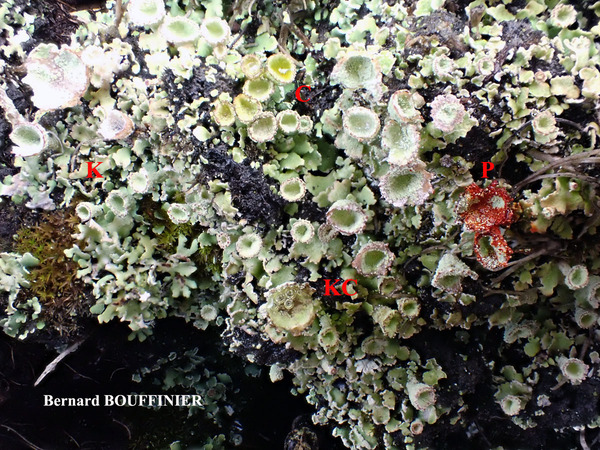
Bernard Bouffinier- Source: http://www.lichensmaritimes.org/index.php?task=fiche&lichen=1203&lang=en
France, Pointe de Pen-Hir
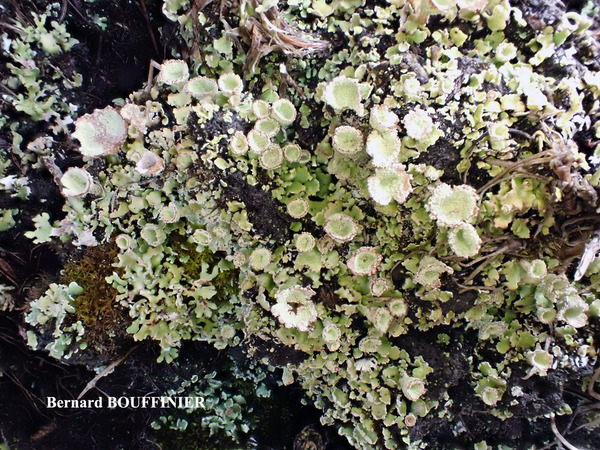
Bernard Bouffinier- Source: http://www.lichensmaritimes.org/index.php?task=fiche&lichen=1203&lang=en
France, Pointe de Pen-Hir
Growth form: Fruticose
Substrata: lignum, soil, terricolous mosses, and plant debris
Photobiont: green algae other than Trentepohlia
Reproductive strategy: mainly asexual, by soredia, or soredia-like structures (e.g. blastidia)
Commonnes-rarity: (info)
Alpine belt: extremely rare
Subalpine belt: extremely rare
Oromediterranean belt: extremely rare
Montane belt: extremely rare
Submediterranean belt: extremely rare
Padanian area: absent
Humid submediterranean belt: extremely rare
Humid mediterranean belt: absent
Dry mediterranean belt: absent

Predictive model

Bernard Bouffinier- Source: http://www.lichensmaritimes.org/index.php?task=fiche&lichen=1203&lang=en
France, Pointe de Pen-Hir

Bernard Bouffinier- Source: http://www.lichensmaritimes.org/index.php?task=fiche&lichen=1203&lang=en
France, Pointe de Pen-Hir

Bernard Bouffinier- Source: http://www.lichensmaritimes.org/index.php?task=fiche&lichen=1203&lang=en
France, Pointe de Pen-Hir

Bernard Bouffinier- Source: http://www.lichensmaritimes.org/index.php?task=fiche&lichen=1203&lang=en
France, Pointe de Pen-Hir

 Index Fungorum
Index Fungorum
 GBIF
GBIF


